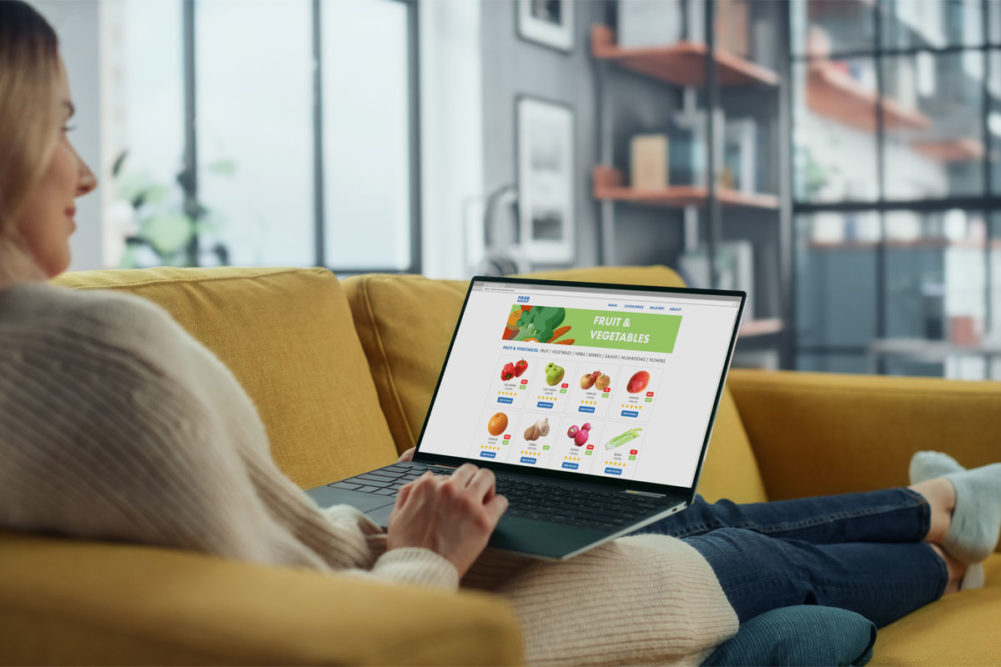CHICAGO — Online food and beverage retail sales, which includes instore pickup, curbside delivery and at-home delivery, tracked by Euromonitor International, reached $76 billion in 2022, and the market researcher predicts online grocery will be the largest source of growth for food and beverages in the United States in the future.
Approximately 26% of Americans used online grocery shopping services in 2022, according to Euromonitor, up from 13% before the COVID-19 pandemic.
High-income millennial parents with young children are core users of online grocery shopping. Such services saves this group of consumers time, something they value having children and busy lifestyles.
Future growth will require convincing younger generations the time they gain by having groceries ready at pick up or delivered is worth the extra cost, according to Euromonitor. Families with young children will still most likely be the most active group using the services. However, the declining rates of marriage and fertility may be a roadblock to growth. By 2030, the number of households with children in the United States is expected to decline by 1.4 million, while those with no children will grow by 6.7 million, the study said.
With the convenience of online shopping, shoppers gravitate toward premade meals and soups, dairy, processed meat and seafood, and savory snacks, which are all leading categories in e-commerce.
Shoppers order fewer baked foods and fresh produce through online channels while dairy, processed meat and seafood, confectionery and carbonated beverages all do well, according to Euromonitor.
Fresh food remains a challenge to sell online, as shoppers prefer to choose their own fresh foods. Fresh foods make up 12% of total food and beverage sales online, less than half of their share of grocery overall, according to the study. Consumers may trust someone else choosing their eggs, nuts or sugar while online shopping, but do not trust someone else to pick their meat, seafood or produce.
Baked foods have the same issues as fresh produce. Fresh cakes, bread and pastries aren’t bought as frequently online, while more heavily processed and standardized varieties perform better. Other categories without fresh substitutes, including desserts, mixes, rice or pasta tend to stay on track for online shopping, the study said. Snacks take a slight lead in online grocery than in store.
Beverages, particularly alcohol, have faced more challenging times than other categories. The study found alcoholic beverages ranked last when it comes to online shopping. Each state has its own laws, creating difficulties for the category to do well. Among alcoholic beverages, wine was the largest category online, making up 18% of total US alcohol sales, according to the study.
Consumers seem to lean toward hot drinks, which generated 8% in sales online and 3% of retail packaged food and drink sales in brick-and-mortar formats, according to the study.
Soft drinks stayed at a steady pace for both online and offline sales. Powdered concentrates made up 1% of overall beverage sales, but accounted for 10% of online sales, according to the study.
Four companies lead the e-commerce grocery shopping category. Walmart held 25% of online food and beverage sales in 2022. Instacart was the second largest online retailer with about one quarter of US online grocery sales. Amazon ranked third, having a strong presence in categories like hot drinks and snacks. Kroger ranked fourth, with 9% of online grocery sales, according to the study.





